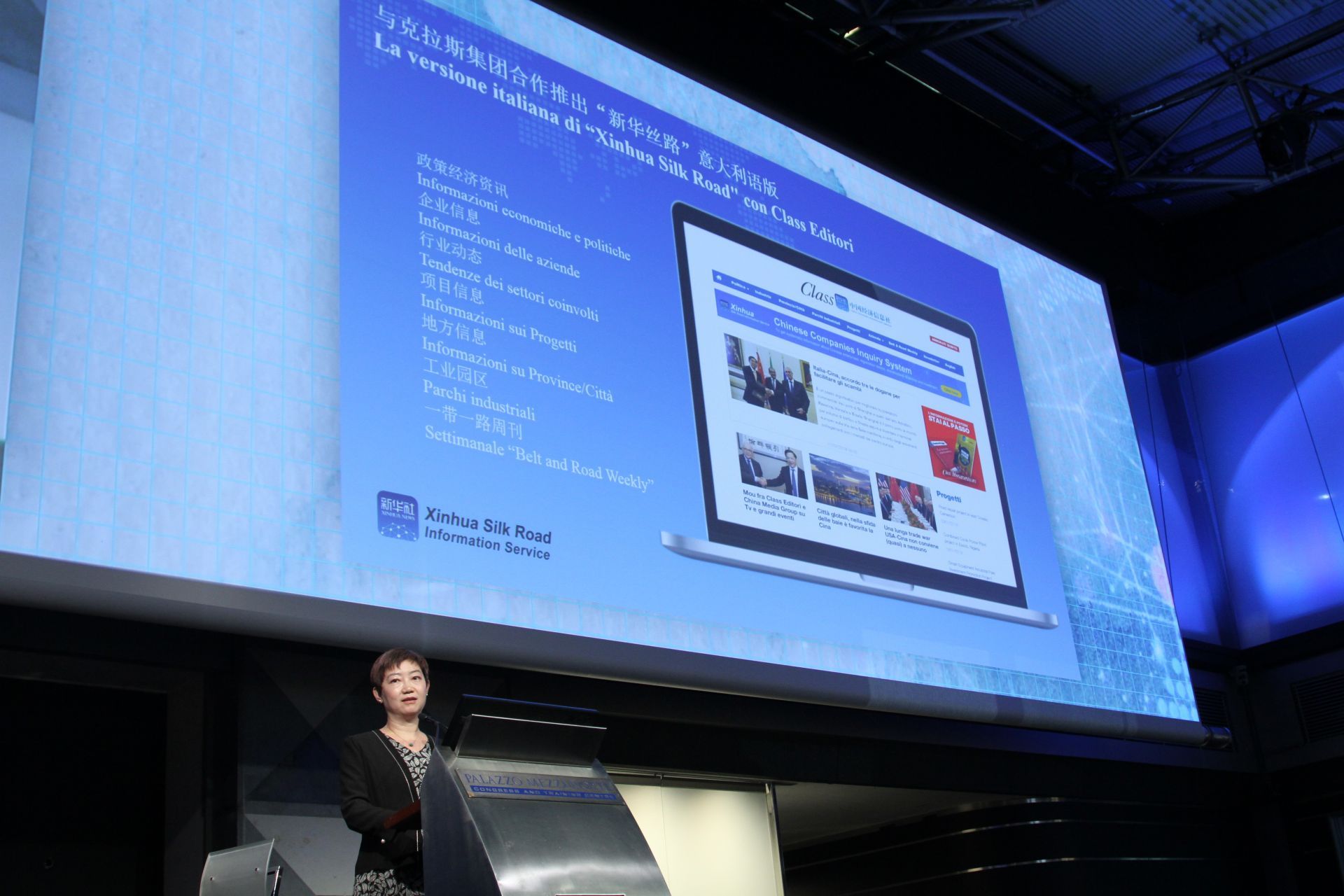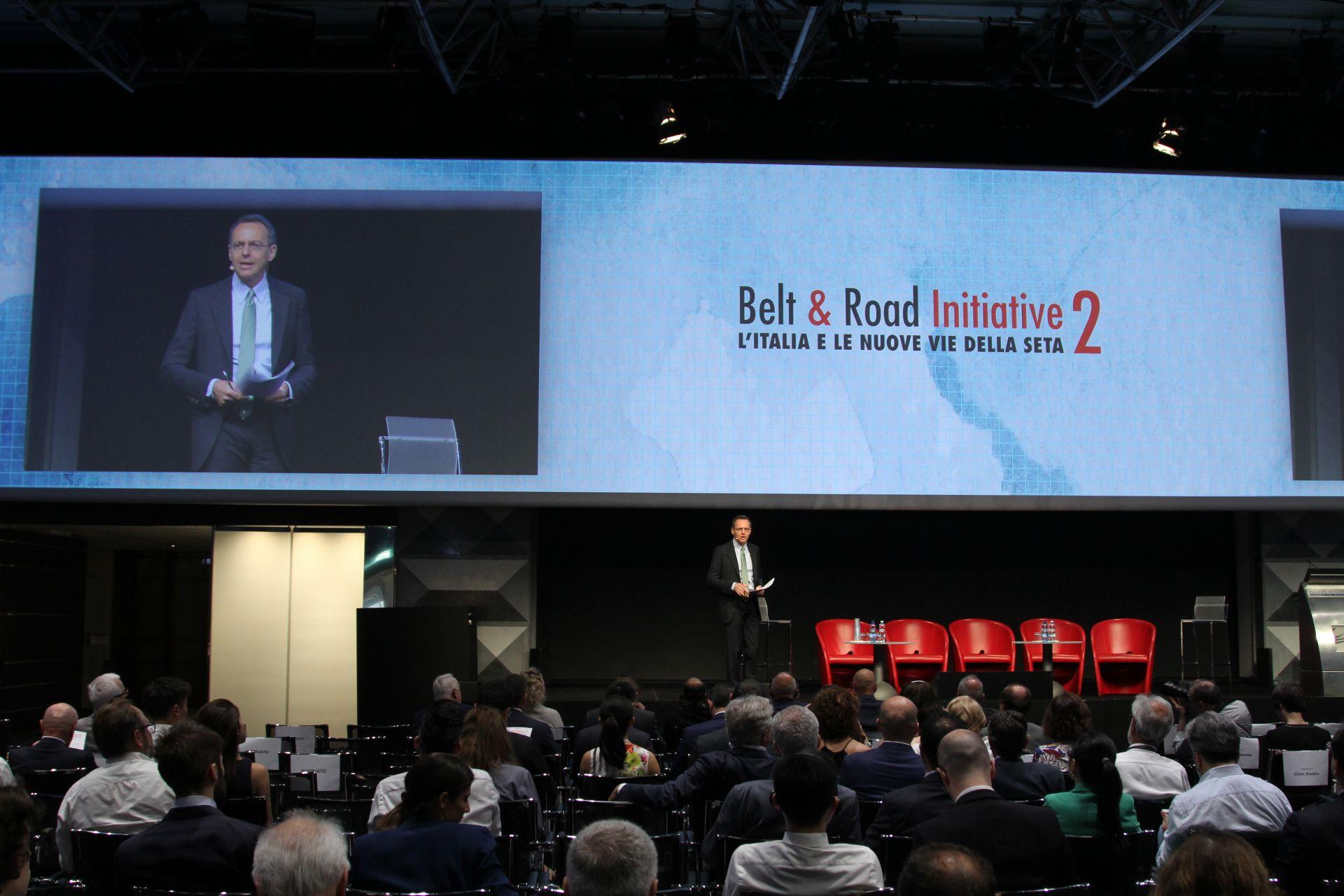
Photo: The Second Belt and Road Conference of Investment Matching for Chinese and Italian Enterprises is held in Milan, Italy, July 5. (Xinhua/Shen Zhonghao)
MILAN, July 5 (Xinhua) -- The Second Belt and Road Conference of Investment Matching for Chinese and Italian Enterprises was held in Milan, Italy on Friday.
Organized jointly by China Economic Information Service (CEIS) of Xinhua News Agency and Class Editori, a leading media group in Italy, the conference attracted about 450 attendees from Italy and China. At the conference, they conducted in-depth exchange of views over topics such as how to better participate in the Belt and Road construction, seek business investment opportunities, and achieve interconnection.
In March this year, the Chinese and Italian governments signed a memorandum of understanding (MOU) on jointly promoting the Belt and Road construction.
Since the establishment of diplomatic relationships between China and Italy in 1970, the bilateral trade maintained constant development. In 2018, the bilateral trade between the two countries exceeded 50 billion U.S. dollars, and the two-way investment topped 20 billion U.S. dollars. At present, Italy is China's fifth largest trading partner in the EU, and China is Italy's largest trading partner in Asia.
It is very important for Italy to sign the MOU under the Belt and Road Initiative (BRI) with China, said Michele Geraci, Under-Secretary of State for the Italian Ministry of Economic Development, adding that Italy hopes to seize the opportunity brought by the BRI and become a hub of Europe and it also welcomes the Chinese companies to invest in Italy. Recently, Rome launched the direct flights to the Chinese cities such as Hangzhou and Chengdu, showing a step forward in the interconnection,
Meanwhile, Li Junhua, Chinese ambassador to Italy, said that during the Second Belt and Road Forum for International Cooperation in April this year, project cooperation agreements totaling more than 64 billion U.S. dollars were signed, showing huge business potential brought by the BRI. The signing of the BRI MOU between the two countries is just the first step. The key for them is to ensure implementation.
Paolo Panerai, Editor-in-chief and CEO of Class Editori, said that the Italian companies should grasp the Chinese market and pay attention to the opportunities brought by the BRI. The Italian version of Xinhua Silk Road launched jointly with CEIS can help them to better access investment information and provide research information before investment.

Photo: Chen Xiaobin, Assistant President of CEIS, addresses the conference in Milan, Italy, July 5. (Xinhua/Shen Zhonghao)
The conference is a concrete measure to implement the consensus of the Chinese and Italian leaders. In order to better promote the participation of the Italian companies in the Belt and Road construction, at the beginning of this year, CEIS and Class Editori launched the Italian version of Xinhua Silk Road, said Chen Xiaobin, Assistant President of CEIS.
The Italian version of Xinhua Silk Road sets up major columns, such as policy and economy, enterprise information, project progress, and "Belt and Road Weekly", to provide the latest BRI information for Italian enterprises, according to Chen.
Xinhua Silk Road, run by CEIS, is a comprehensive information service platform focusing on the Belt and Road Initiative. Since launched in 2015, it has developed into the most comprehensive provider of BRI information, offering online full-process consultation services and one-stop offline services. (Contributed by Hu Pingchao, Chen Zhanjie, Shen Zhonghao)




 A single purchase
A single purchase









